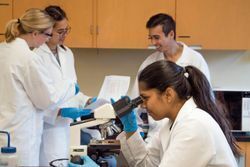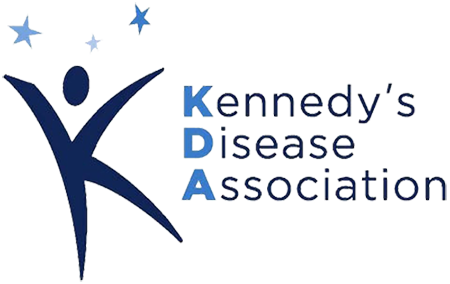How is Kennedy's Disease (KD) Diagnosed?
Fortunately, there is a simple blood test today that checks a person’s DNA for the defective chromosome. Almost any DNA testing laboratory can perform the test. A doctor or nurse can draw the blood and send it off to the laboratory. Test results are normally returned within three to six weeks.
See DNA Testing and Labs for additional information on the actual DNA test and labs that can perform the test.
Common Misdiagnosis
Important: A DNA blood test can determine if Kennedy's disease is the correct diagnosis.
The most frequent misdiagnosis has been ALS (Lou Gehrig's Disease). Below are other diseases that share similar symptoms with Kennedy's Disease and have caused Kennedy's Disease patients to be misdiagnosed. .
The most common misdiagnoses that many individuals with Kennedy's Disease have received:
- Amyotrophic Lateral Sclerosis (also known as: ALS or Lou Gehrig's Disease)
- Spinal Muscular Atrophy III - Kugelberg-Welander
- Glycogen Storage Disease
- Guillain-Barre Syndrome
- Myasthenia Gravis
- Multiple Sclerosis
KD Diagnostic, Management & Patient Reports
Kennedy's Disease/Spinal and Bulbar Muscular Atrophy

Dr. Al La Spada, who discovered the gene mutation that causes Kennedy's Disease, has published the attached summary with frequent updates since 1991. The current, 2022, version contains a wealth of information on diagnosis, disease management, differential diagnoses with related neuromuscular diseases, genetics, and other topics. This is an excellent resource for researchers, clinicians, patients, and families. You can read Dr. La Spada's paper by clicking here.
French Protocol for KD Diagnostics & Management Report

The French national protocol for Kennedy’s disease (SBMA): consensus diagnostic and management recommendations. In the context of an orphan disease, these guidelines provide a reference care pathway for patients with KD both for general practitioners and general neurologist who may be less familiar with the condition. The protocol is based on currently available scientific evidence and provides a consensus statement for the care of KD patients. The multi-centre working group included French specialists and therapists with experience in the diagnosis and management of KD, international experts, and representatives of the French Association for Research in ALS (ARSLA). Contributors for each section were selected based on their clinical expertise in specific aspects of KD. Guideline development was coordinated by the first author and supported by a group of the multidisciplinary working group. The co-authors contributed to specific manuscript sections based on their sub-specialty and clinical expertise. To view and download the report with a summary page, click here.
Kennedy's Disease/SBMA Voice of the Patient Report

This report is based on the “Patient-Focused Drug Development (PFDD)” meeting held at the KDA 2022 conference and related patient input. Voice of the Patient reports are used by the U.S. Food and Drug Administration as an important source of information used to evaluate clinical trial results.
The Kennedy’s Disease Association is very grateful to the patients, caregivers, and carriers who participated in the PFDD at KDA 2022. We also want to thank those who responded to the pre-meeting survey or contributed after the meeting in comments on social media. It is our hope that the KD/SBMA Voice of the Patient report will be read by scientists and generate additional research into the mechanisms of Kennedy’s Disease and, more importantly, into an eventual cure for this devastating disease. To read the report, click here.


